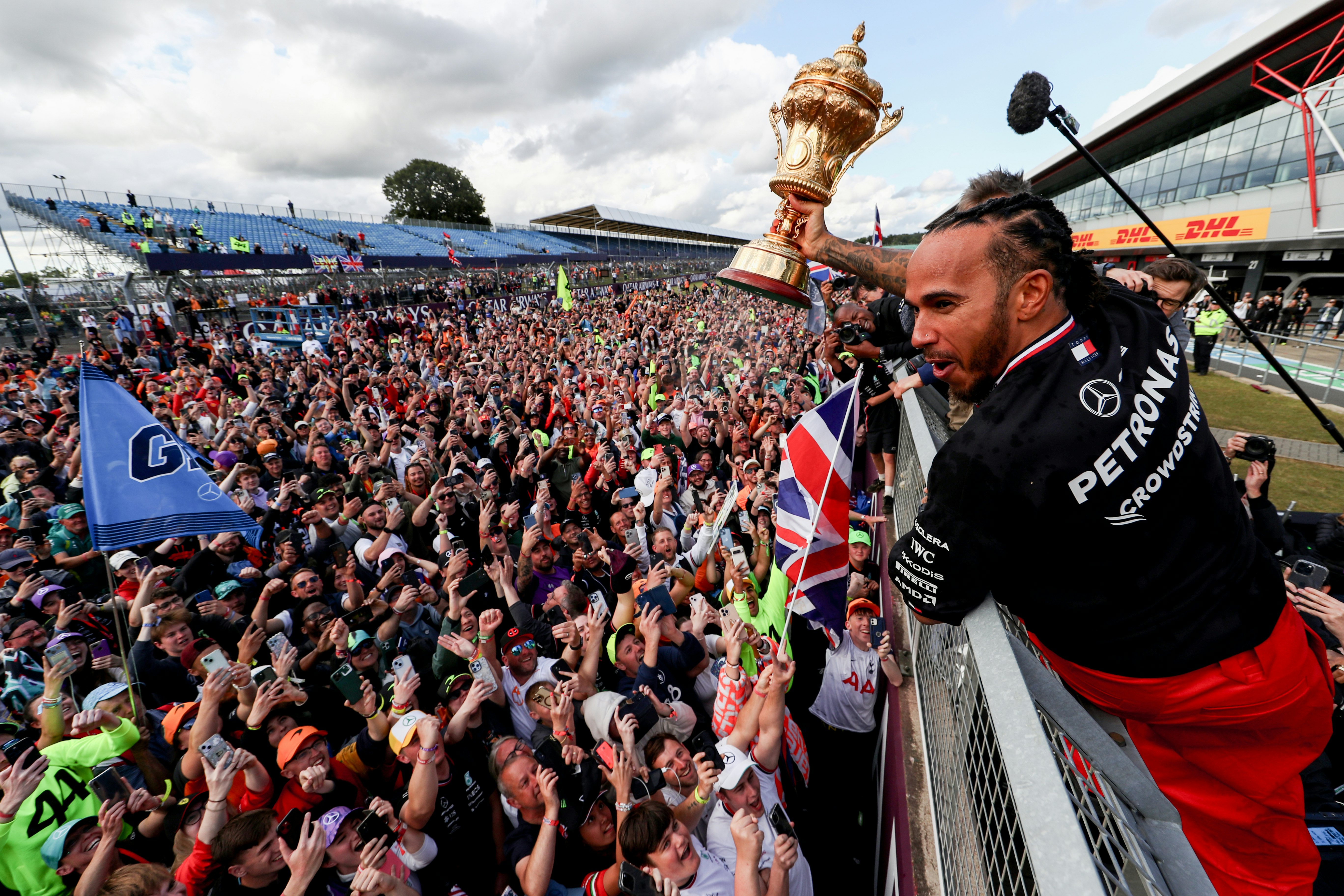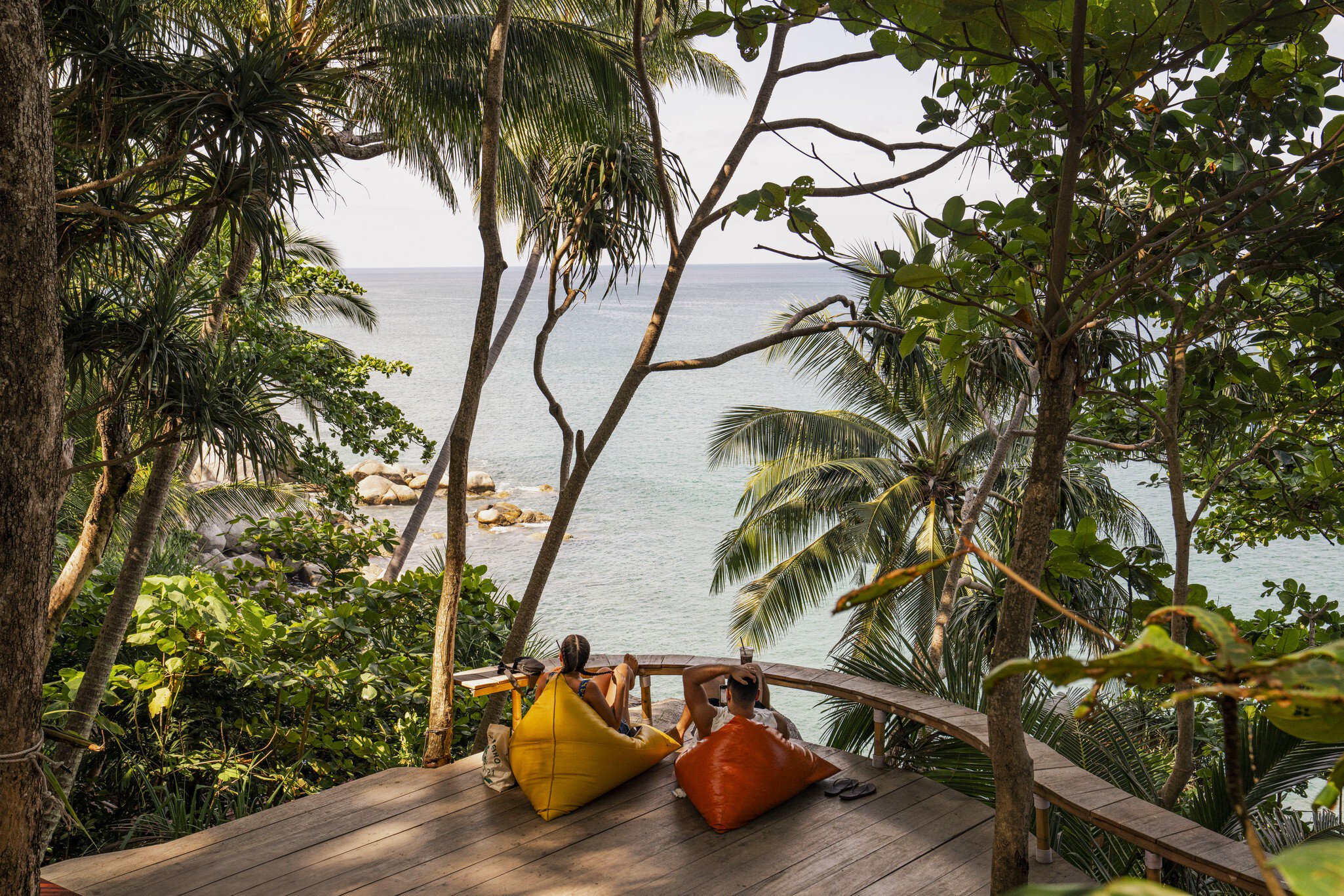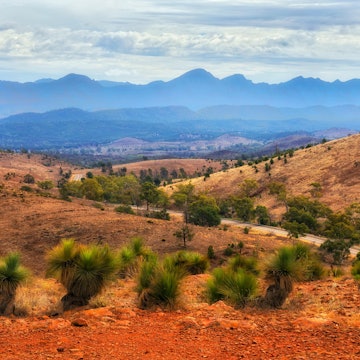

Sergio Perez, from Mexico, competes at the Austrian Grand Prix in 2024. Michael Potts F1/Shutterstock
For 75 years, the Formula 1 series has been the pinnacle of auto racing, featuring the fastest road-course cars and the best cutting-edge technology. Truly an international competition, the 20-plus races take place in cities from Miami to Madrid. No annual lineup is the same, since new venues are added and others go on hiatus each year, but these stalwarts are tried and true spots to see the rubber hit the road.

1. Melbourne Grand Prix Circuit, Australian Grand Prix
Best for F1 newbies or casual fans
The F1 season kicks off in Melbourne with the Australian Grand Prix, the second oldest auto race held in Australia. The Australian Grand Prix moved to Melbourne in 1996, and each spring, some 300,000 people make their way into Albert Park to watch their favorite driver zoom around the 5.3km (3.3-mile) circuit surrounding shimmering Albert Park Lake.
Clean, safe and frequent public transport makes this the perfect introduction to F1 for those who might be worried about logistics or navigating traffic, or who prefer to spend a partial day at the track. Though it’s a bucolic place to enjoy a day at the races, the park is relatively flat, which means you’ll need to spring for a grandstand seat for the best views. Still, we love this track for its proximity to the city center and the bubbling energy that surges during what is typically the year’s first F1 competition.
2. Suzuka Circuit, Japan Grand Prix
Best track design
One of the older Formula 1 speedways, the Suzuka Circuit was designed in 1962 as a Honda test track; its figure-of-8 shape, unique in F1, boasts two intersecting loops that provide a challenge for drivers as well as electrifying moments for fans. It’s iconic and definitely a must-see for anyone who is interested in how speedway design can affect a race.
Though this is a longer circuit at nearly 6km (3.7 miles), the shape also makes it easier to take in more of the track from the grandstands. Historically scheduled in October, toward the end of the season, the Japan Grand Prix moved to April in 2024, which means there’s a possibility of catching ´³²¹±è²¹²Ô’s legendary cherry blossoms in bloom.
Planning tip: There is limited accommodation in Suzuka; most fans stay in Nagoya and take public transit to the track.

3. Marina Bay Street Circuit, Singapore Grand Prix
Best for night owls
When the Singapore Grand Prix launched on the Marina Bay Street Circuit in 2008, it was the first night race in F1 history, and the first street circuit in Asia. Like the iconic Monaco Grand Prix, it’s a street race with a harbor-side component (although as of yet, no cars have crashed into the Singapore harbor), and the city’s gleaming skyscrapers serve as a stunning backdrop.
Night races are a special beast, and Singapore’s has a festival atmosphere, with after-parties on the nights leading up to the race and plenty of live music – typically a world-spanning lineup that reflects Singapore’s multiculturalism. It’s also easy to navigate: Singapore’s excellent public transportation system can get you within walking distance of the track from just about anywhere.
Planning tip: The humidity in Singapore is oppressive even at night, so don’t forget to stay hydrated.
4. Circuit de Monaco, Monaco Grand Prix
Best for a once-in-a-lifetime experience
The Monaco Grand Prix has long been considered one of the most prestigious automobile races in the world. This highlight of the F1 circuit was part of the roster for the very first season in 1950, and has been continuously run since 1955 – it’s part of the "Triple Crown" of motorsports, alongside the Indianapolis 500 and the 24h of Le Mans.
The 3.3km (2-mile) street circuit winds through Monte Carlo and is probably the most treacherous race on the F1 schedule: it’s certainly the only one where two drivers have ended up in a harbor (both survived). In addition to this natural hazard, hairpin turns, elevation changes and even a tunnel combine to challenge even the most seasoned F1 drivers. If you only go to one Formula One race in your lifetime, it should probably be this one.
Planning tip: Monte Carlo isn’t an affordable place at the best of times, and during events like the Grand Prix, hotels book up far in advance and prices soar. Luckily, regional trains to Monte Carlo from Nice, France or Ventimiglia, Italy, are relatively cheap, frequent and quick.

5. Baku City Circuit, Azerbaijan Grand Prix
Best off-the-beaten path experience
Azerbaijan, the former Soviet state, has been independent since 1991. The country joined the ranks of F1 host countries in 2016 with the Baku City Circuit, a 6km (3.7-mile) street course through the capital city with 20 corners and one of the series’ longest straights, which allows for some thrilling passes.
Part of the course is along the Caspian Sea, while other sections wind through the city’s 12th-century medieval center, a UNESCO World Heritage Site. Watching drivers tear through narrow, twisting roads past glowing golden fortresses and iconic buildings like the Government House of Baku at top speed is truly breathtaking. This is also a smaller race than most, with attendance – if you’re looking for an off-the-beaten path adventure, this is the track for you.
Planning tip: Many teams stay at the Baku Hilton; book a seat at the 360 Bar in the hotel for a chance to mingle.
6. Red Bull Ring, Austrian Grand Prix
Best for nature lovers
After a decade-plus hiatus, the Austrian Grand Prix returned to the F1 lineup in 2014, running on a brand-new track nestled amid the soaring Styrian alps outside Spielburg in Southern Austria. The Red Bull Ring is in a stunning natural setting, and its short length (only 4km/2.5 miles) and ample grandstands provide great views of the speedway even from the cheap seats.
Speaking of cheap, the Austrian Grand Prix remains one of the more affordable races in the lineup: parking is free, ticket prices are relatively low and you can camp. The Legends Parade, where vintage F1 cars and famous drivers – all past winners of the Austrian Grand Prix – is a fan favorite event and unique to Red Bull Ring. It’s also the only track at which a driver (in 1987)...more proof that anything can, and does, happen in F1.

7. Silverstone Circuit, British Grand Prix
Best for F1 history nerds
Along with the Circuit de Monaco, the Silverstone Circuit is one of the original Formula One tracks – it first hosted the British Grand Prix in 1950 and has hosted it annually since 1987. Current contracts guarantee it will be a . At 5.9km (3.6 miles), it’s also one of the longest tracks in the series. In his final season in 2024, F1 superstar Lewis Hamilton won this race for the ninth time, a victory that broke Michael Schumacher’s record for the most wins at one circuit.
Silverstone is a rural track, and lots of fans camp to avoid driving in/out daily. Milton Keynes and Northampton are the largest towns nearby; special shuttle buses run to and from the train stations to the track on race weekend. Brackley, a small town just a 10-minute drive from the circuit, is also the home of the Mercedes F1 head office. It's not unusual to see members of the team out and about there, so keep an eye out when you're stocking up!
Planning tip: Check out the grandstands at the International Pit Straight, which overlooks the start/finish line and is full to the brim with cheering fans each year.
8. Autódromo José Carlos Pace (Interlagos), Brazilian Grand Prix
Best crowds
If you’re looking for a lively fan atmosphere, check out Interlagos outside São Paulo, Brazil. Home country of the legendary triple champion Ayrton Senna, who is buried just 15km (9 miles) from the speedway, Brazil has a long, passionate history with Formula One, and it shows in the crowds that gather each November to watch the action at one of the series’ most dynamic and spirited tracks.
Just 4.3km (2.7-miles) long, Interlagos has many elevated grandstands that allow for a broad view of the course. Live music, especially the syncopated beats of Brazil’s national music, samba, is always a guarantee. And it is also one of only six circuits where you can – 30-minute, pit-stop-free races introduced in 2021 – over the course of the weekend, which adds to the excitement.
Planning tip: Consider reserving a covered seat. Rain is not uncommon in Brazil in the fall, and if the sun is shining, you’ll be grateful for shade.

9. Circuit of the Americas, United States Grand Prix
Best track views
The Circuit of the Americas outside of Austin, Texas, has been hosting the United States Grand Prix since 2012. This modern, 5.5km (3.4-mile) track was the first in the US to be built specifically for F1, and has been designed to maximize viewability: elevation changes both increase the difficulty and allow spectators to take in as many as four turns from the same vantage point.
Though F1 is still growing in the US, decades of NASCAR and IndyCar racing have set standards for a motorsports event, and concerts are ready to keep spectators entertained: Taylor Swift, Britney Spears and Bruno Mars have all performed at the Circuit of the Americas. Don’t miss the local food vendors from Austin, serving up regional delicacies like tacos, fried chicken in a cone, and grilled cheese.
Planning tip: The track is only about 25km (15 miles) from Austin, but the city’s notorious traffic issues means you should allow up to two hours if you plan to drive. Parking passes must be reserved in advance.

What should I bring to a Formula 1 race?
While rules about what you can bring in to each track vary, here are a few tips that might make your day a little more comfortable:
Earplugs: Cars are loud and races are long, so bring these if you think you'll need respite from the screaming engines.
Hat, sunscreen and sunglasses: Much of the F1 season takes place during summer and/or in warmer locales, so sun protection is a must.
Bottle of water: Most tracks don’t let you bring in your own food, but a bottle of water is typically permitted and can be refilled to save you money.
Blanket or chair: For the General Admission folks; those with grandstand seats may want a grandstand chair.
Race-scanner headphones: Loudspeaker commentary is often inaudible or distorted, plus you can listen to what your favorite teams are saying.
Closed-toe shoes and long trousers: If you have a pass for the pits or garage areas, be aware that shorts, skirts and sandals are typically not allowed.











